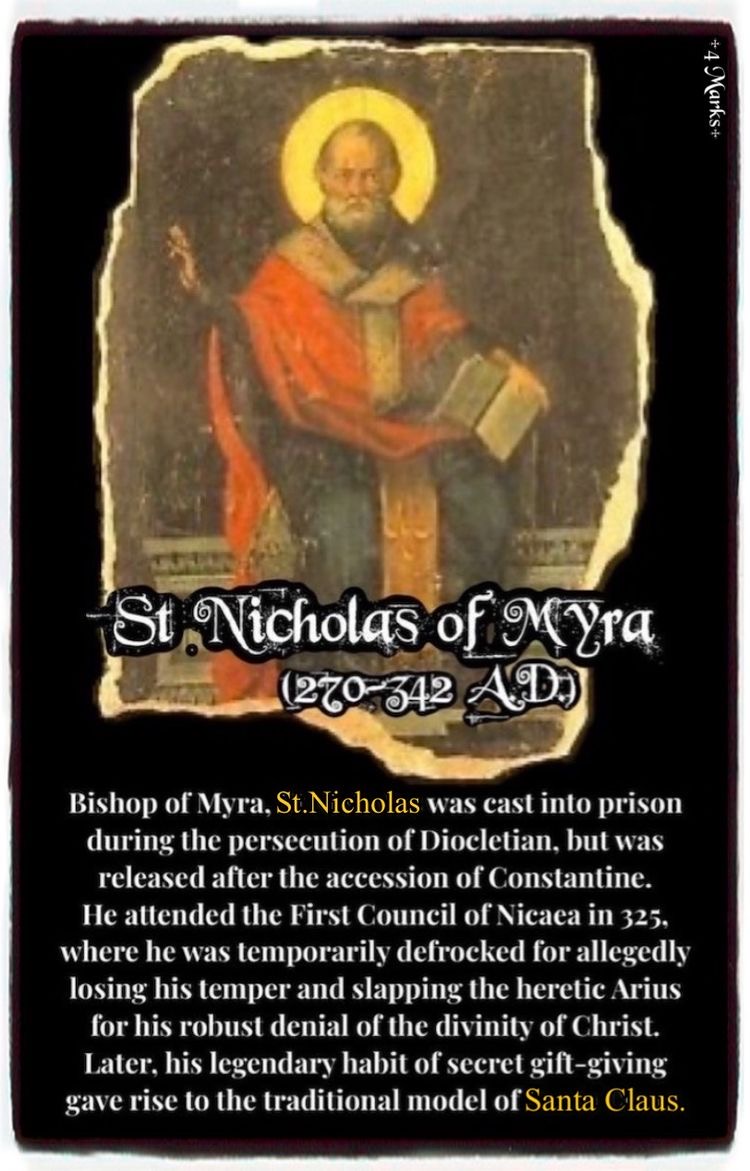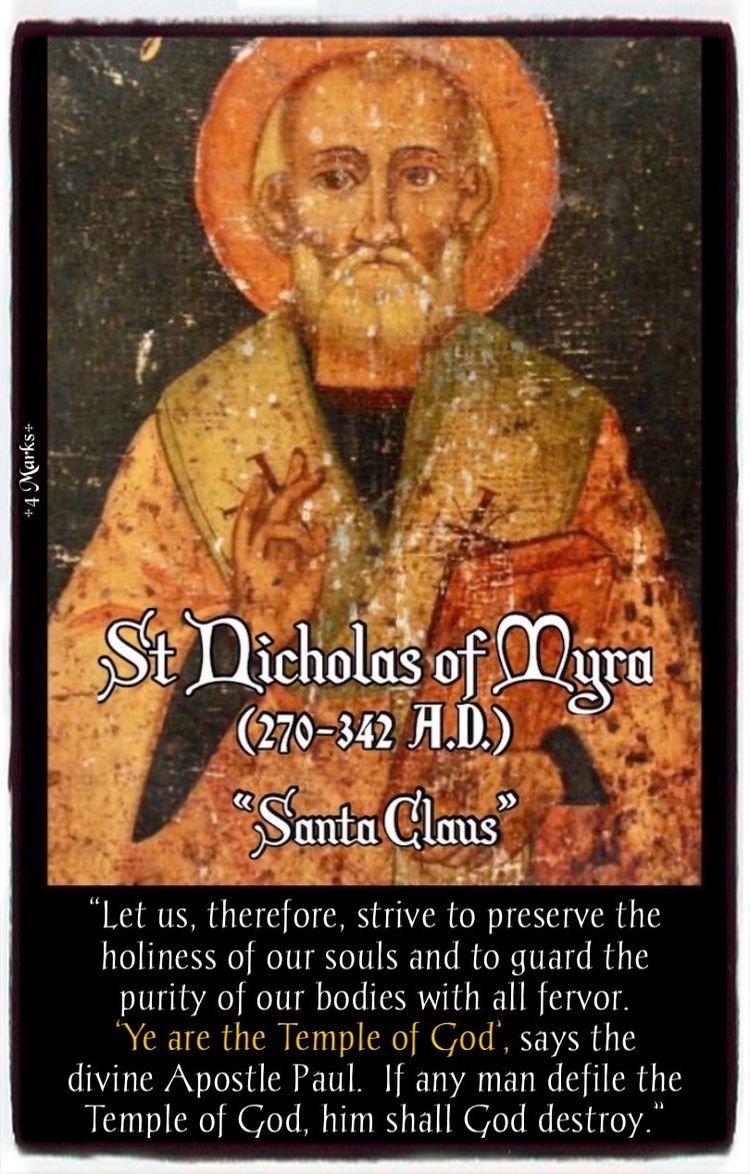St. Nicholas of Myra
quotes from Nicholas of Myra:→




Also known as Nicholas of Bari, he lived from 270-343 A.D. and was an early Bishop of Myra and is considered the traditional model for Santa Claus. The earliest known hagiography of St. Nicholas is the Life, Works, and Miracles of our Holy Father Nicholas, Archbishop of Myra in Lycia, written by Michael the Archimandrite, which is dated ca 700 A.D. (almost 350 years after the saint’s death.) This is not necessarily a problem, since it’s about the same time interval that separates Alexander the Great from his main biographers. Despite its extremely late date, Michael the Archimandrite’s Life of Saint Nicholas is believed to heavily rely on older written sources and oral traditions. It is in this work that we first read of the Saint’s legendary habit of secret gift giving.
Nicholas is said to have been imprisoned and tortured during the Great Persecution under the Emperor Diocletian (ruled 284–305), but was released under the orders of the Emperor Constantine the Great (ruled 306–337). Assuming that Nicholas lived during the reign of Constantine the Great, it is likely that he attended the Council of Nicaea, which condemned Arianism and formulated the Nicene Creed. Although the original minutes of this council were destroyed, people have tried to reconstruct the list of bishops who agreed to the orthodox formula of the Trinity. This list is known from eleven medieval copies. Only three of them mention Nicholas, but one of these is considered to be among the earliest and best copies. Nicholas’s name occurs as “Nicholas of Myra of Lycia” on the tenth line of a list of attendees at the Council of Nicaea recorded by the historian Theodoret in the Historiae Ecclesiasticae Tripartitae Epitome, written sometime between 510 and 515.
According to legend, while attending the Council of Nicaea, Nicholas lost his temper and slapped the heretic Arius, leading the Council to decide to temporarily defrock Nicholas, which is why he is portrayed without his mitre in ancient icons. Because of the embarrassing nature of this legend, many scholars view it as unlikely to have been invented.
Less than two hundred years after Saint Nicholas’s probable death, the Eastern Emperor Theodosius II (ruled 401–450) ordered the building of the Church of Saint Nicholas in Myra, which thereby preserves an early mention of his name. The Byzantine historian Procopius also mentions that the Emperor Justinian I (ruled 527–565) renovated churches in Constantinople dedicated to Saint Nicholas.
Recent research has shown that the original tomb of Saint Nicholas, on the island of Gemile, was located outside the city walls, where the church (restored by Czar Nicholas II of Russia) still stands on top of what has been identified as an ancient necropolis. Because Roman law still forbade people from being buried inside cities until the mid-fourth century, the location of the tomb outside the town suggests that the traditional date of his death as 343 A.D. may be true.
Letter:
text
Letter:
text